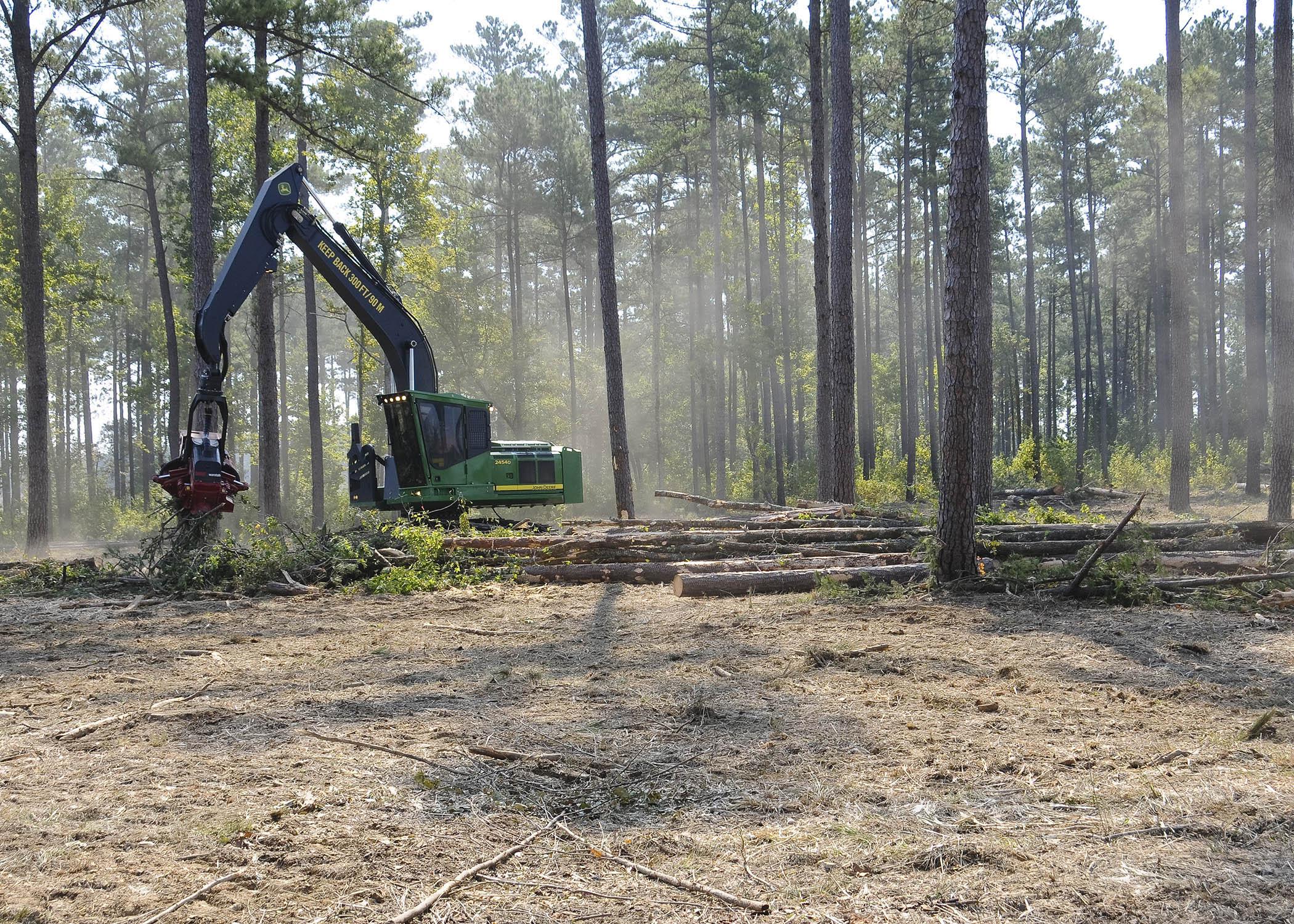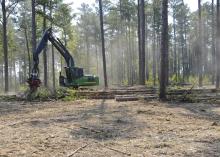Information Possibly Outdated
The information presented on this page was originally released on December 13, 2012. It may not be outdated, but please search our site for more current information. If you plan to quote or reference this information in a publication, please check with the Extension specialist or author before proceeding.
Timber value jumps, still drops to No. 3
MISSISSIPPI STATE – An 8 percent increase in a billion-dollar industry is significant, but timber still fell from its long-held second place spot on Mississippi’s agricultural commodity list.
James Henderson, assistant forestry professor with Mississippi State University’s Extension Service, is estimating the 2012 value of Mississippi forest products to be $1.03 billion, compared with $957 million the previous year. Final numbers using more complete data will replace the estimate in February.
Forestry has been in one of the state’s top two commodities for a quarter of a century, spending the last 16 years behind poultry and eggs. In 2012, MSU economists predict soybeans will leap into second, pushing forestry to the No. 3 position.
Henderson said forestry and forest products sectors will remain a driving force in the state’s economy.
“Processing harvested timber into products, such as lumber, paper and wood furniture, results in an economic impact to the state, amounting to more than $10 billion in sales and contributing to more than 63,000 jobs,” he said.
“The primary factors contributing to the 2012 harvest value’s predicted increase are continued improvement in the national economy and residential construction,” he said. “Pine sawtimber and hardwood pulpwood prices increased 2.5 percent and 17.2 percent, respectively. Both of these products were at historically low levels during 2011, and modest increases in demand for housing and pulp products resulted in modest improvement in demand and prices.”
Henderson said the housing market continues to show improvement. Evidences of this change are increases in home sales and residential construction, and low inventories of new and existing homes.
“New home construction is expected to maintain a positive trend over the next several years, and demand for sawtimber should continue to show increases during 2013 as lumber mills increase production,” he said. “However, stumpage prices will not necessarily increase greatly over the next several years as timber inventories in Mississippi are high.”
Estimates from the Mississippi Institute for Forest Inventory indicate increases in standing pine sawtimber of more than 43 percent since the beginning of the U.S. housing bubble collapse.
“It will take several years to reduce this inventory,” Henderson said.
Other product categories, such as pine pulpwood and hardwood sawtimber, showed price declines ranging from 2 percent to nearly 8 percent, reflecting relatively higher prices during 2011 with little improvement in demand during 2012.
“On the supply side, most mills were able to accrue substantial inventories earlier in the year because of the relatively dry spring and summer. Thus, demand from forest product mills began to wane, particularly for sawtimber products,” he said.
Henderson expressed his belief that the U.S. housing market is on the path to recovery.
“Housing starts and permits -- leading indicators of construction -- are up by 42 percent from this time last year,” he said. “Both new and existing home inventories are at lows not seen since the peak of the U.S. housing bubble. These are all positive indicators that demand for timber will be expanding over the next few years.”
David Jones, assistant forest products professor with MSU’s Extension Service, said when housing starts increase, all products made with wood increase in demand, including lumber, furniture and paper. While some export markets have declined, such as Greece and Italy, others have increased along with domestic demand, such as South Korea and Japan.
“Most people don’t realize that natural disasters boost production and demand for forest products,” Jones said. “Japan’s tsunami recovery really kicked in this year, plus Hurricane Sandy hit the Northeast. Even bad winters can boost pole and piling manufacturing. Telephone poles have to be replaced when they are snapped by ice storms.”
Jones said Hurricane Sandy will help the industry finish the last quarter of the year strong.
“Usually this time of year, mills have a low inventory. When you combine that with a natural disaster, prices pick up. 2013 should continue strong if current projections hold, and it should be a good year for forestry and forest products,” he said.
According to the Mississippi Department of Agriculture and Commerce website, the state has 19.6 million forested acres owned by 125,000 landowners.






